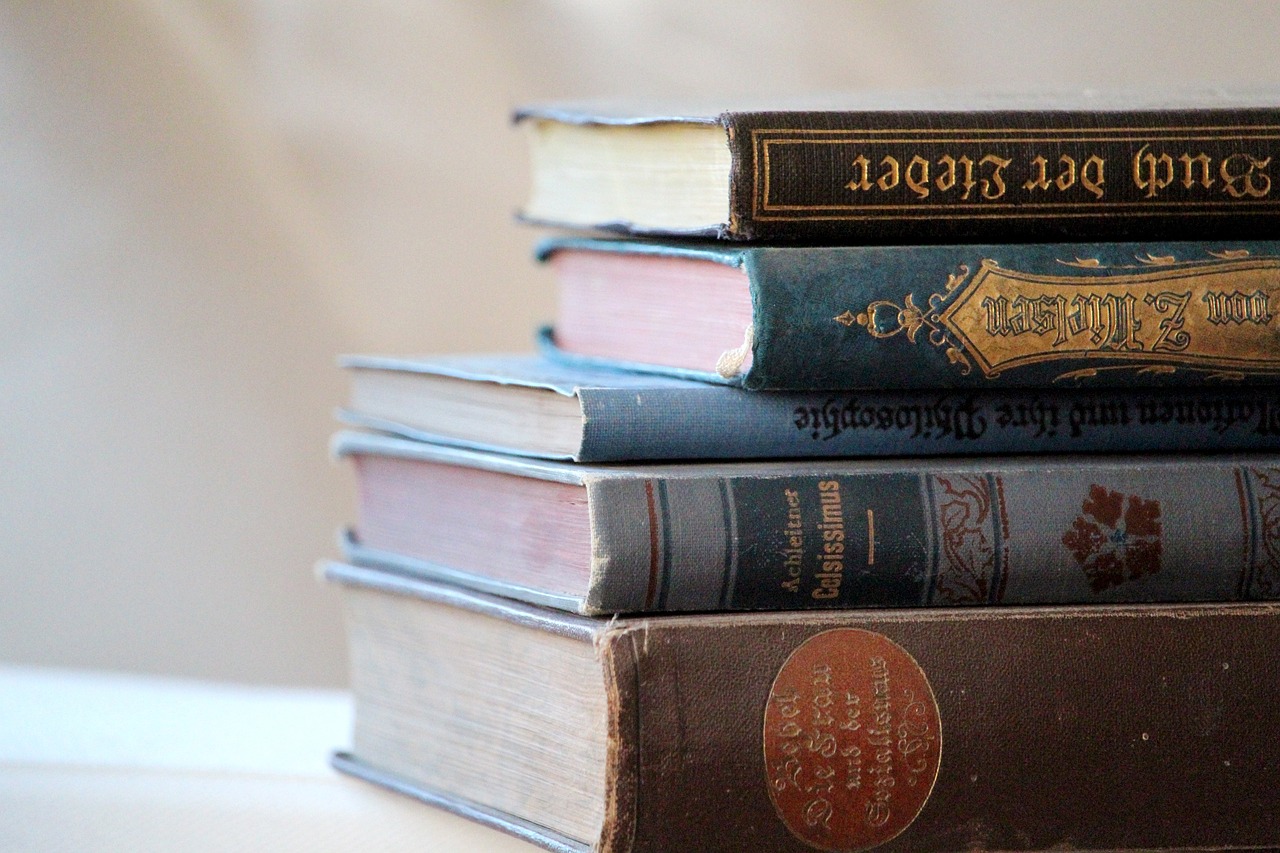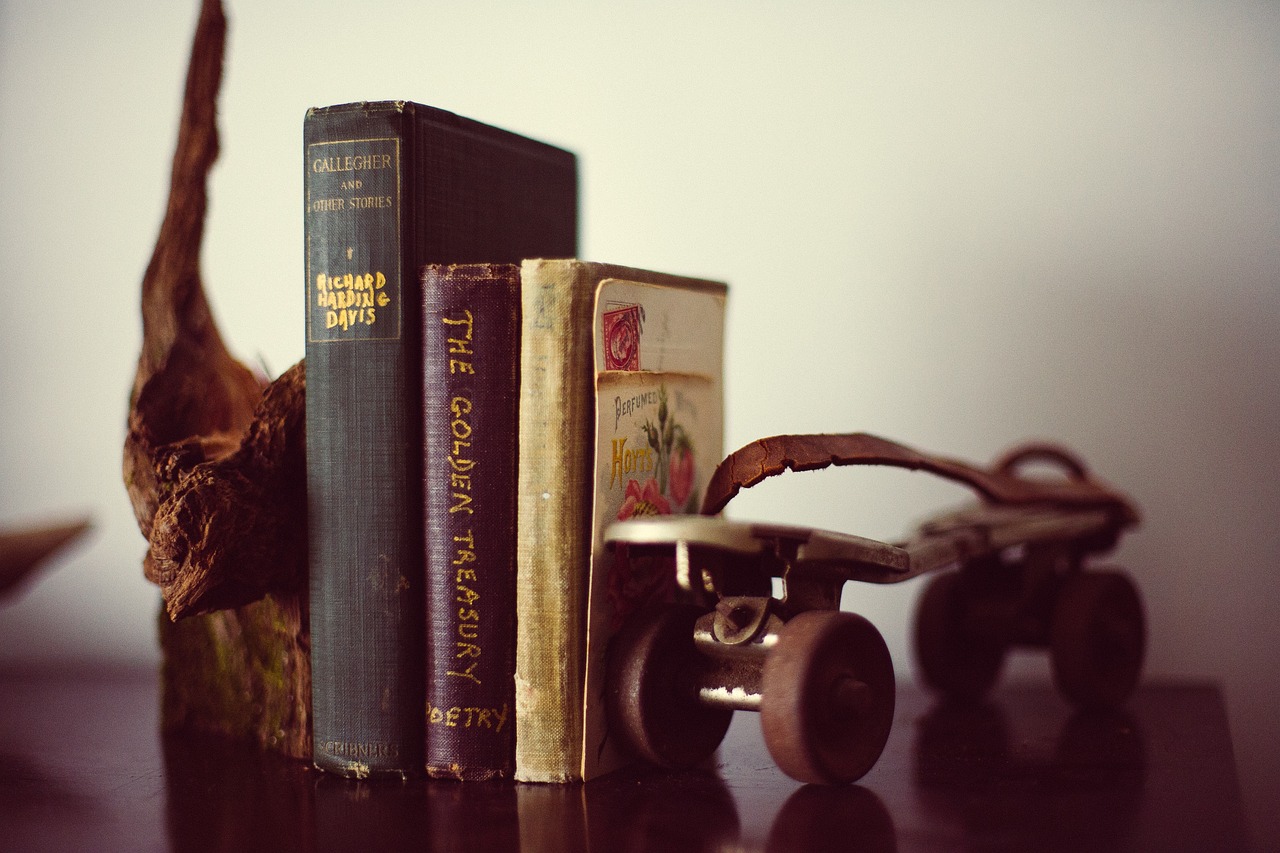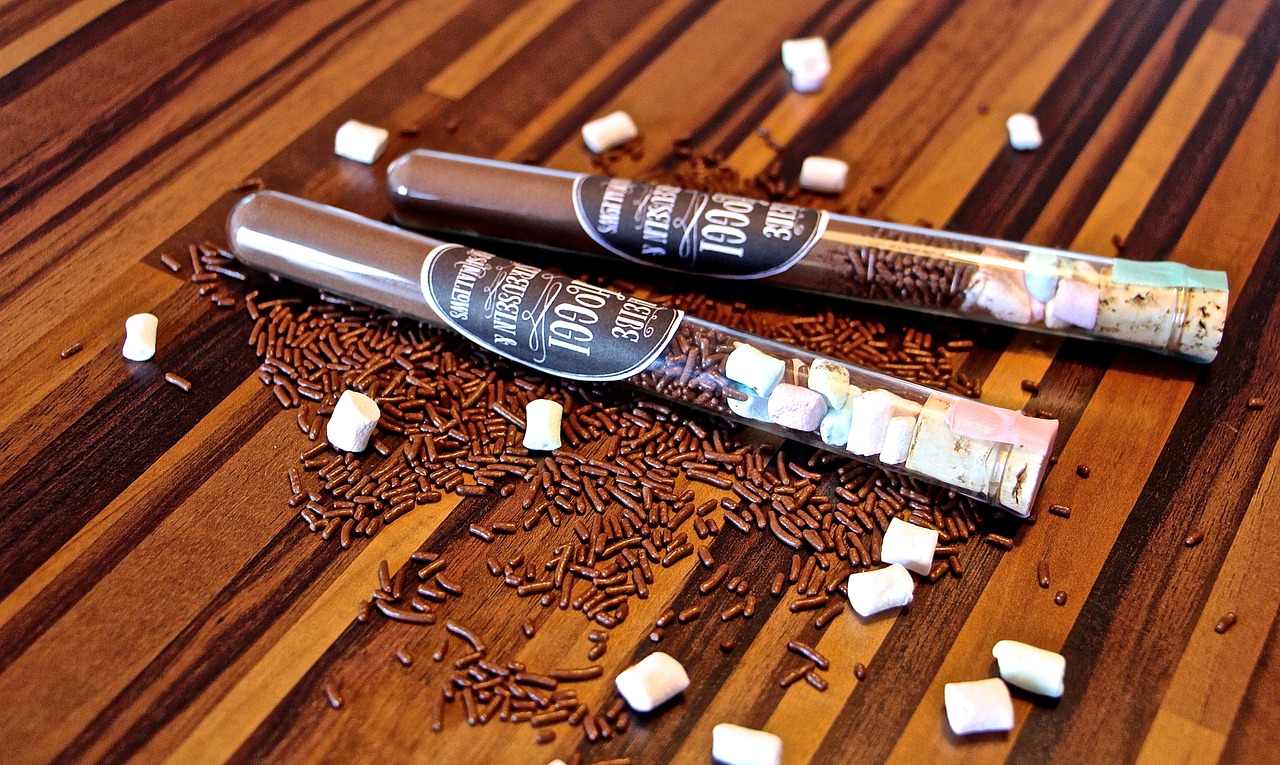Using Old Books for Unique DIY Home Decor
Have you ever looked at a dusty old book and thought it was just taking up space? Well, it’s time to change that perspective! Old books are not just vessels of stories; they can also be transformed into stunning home decor pieces that reflect your personality and creativity. Imagine turning those literary treasures into unique items that not only beautify your living space but also tell a story of their own. In this article, we will dive into the world of DIY home decor using old books, offering you creative ideas and practical tips to repurpose them into stylish and functional pieces. Whether you're a book lover or just someone looking to add a touch of vintage charm to your home, there's something for everyone in this journey of transformation.
One of the simplest yet most effective ways to incorporate old books into your home decor is through creative displays. Think of your books as art pieces waiting to be showcased! You can create stunning arrangements that not only serve as decor but also celebrate your love for literature. For instance, consider stacking your favorite books in an artistic manner on a coffee table or shelf, creating a focal point that sparks conversation. You can also explore wall-mounted displays, where books are arranged in a visually appealing way, adding depth and interest to your walls. With a little creativity, your old books can become eye-catching elements in your home.
Why stop at displaying the whole book when you can turn its pages into beautiful art? Using pages from old books allows you to create stunning wall art that adds character to any room. Imagine framing a page with a beautiful illustration or a poignant quote; it’s like giving a second life to a piece of literature! In this section, we’ll explore various techniques for transforming book pages into art pieces, including framing, decoupaging, and crafting unique designs.
Transforming individual pages into framed art pieces is a fantastic way to bring a vintage touch to your decor. When selecting pages, look for those with beautiful typography or illustrations that resonate with you. Once you’ve chosen your pages, consider using frames that complement your home’s aesthetic. A rustic wooden frame can add warmth, while a sleek metallic frame can provide a modern twist. Arrange the framed pages in a gallery wall style for a cohesive look that draws the eye.
If you’re feeling particularly artistic, creating a collage from various book pages can be a fun and expressive project. Start by gathering pages that have different colors, textures, and themes. Cut them into various shapes and sizes, then adhere them to a canvas or board using a strong adhesive. This process allows you to craft a cohesive design that tells a story or evokes a certain mood. The beauty of collage art is that there are no rules—let your creativity flow!
For a more dimensional approach, consider utilizing shadow boxes to display book pages. This technique adds depth and interest to your decor. Layer the pages within the shadow box and incorporate other elements like photos, trinkets, or natural items like dried flowers. The combination of textures and layers creates a captivating visual experience that’s sure to impress your guests.
Decoupage is a versatile technique that allows you to upcycle old book pages into functional items. From decorating furniture to crafting unique storage boxes, the possibilities are endless! Imagine a vintage table adorned with decoupaged book pages, bringing a literary flair to your space. This creative approach not only breathes new life into old books but also adds a personal touch to your decor.
Let’s not forget about the practical side of repurposing old books! There are numerous DIY projects that combine creativity with utility, making them perfect for any home. For instance, you can create a book safe, which cleverly hides your valuables while adding flair to your decor. It’s like having a secret compartment that’s also a conversation starter! Additionally, consider transforming old books into planters or holders for your plants. This not only adds a unique touch to your greenery but also allows you to keep your love for literature alive in your living space.
Creating a book safe is a clever way to hide valuables while adding flair to your decor. To transform a book into a secret storage solution, start by selecting a thick hardcover book. Carefully cut out a rectangular section from the pages using a craft knife, ensuring you leave a border around the edges. Once you’ve created the hollow space, you can place your valuables inside and display the book on a shelf or table. It’s a fun and functional project that adds an element of surprise to your home!
Repurposing old books into unique planters or holders for your plants is another fantastic way to combine creativity with nature. Start by selecting a book with a waterproof lining or lining it with a plastic bag to protect it from moisture. Fill it with soil and your favorite plants, and watch as your literary home decor comes to life! This not only adds greenery to your space but also serves as a charming conversation piece.
- Can I use any old book for these projects? Yes, as long as the book is in a condition suitable for repurposing, feel free to use any old book!
- Will the pages be damaged during the DIY process? If done carefully, the pages can be preserved or used creatively without significant damage.
- Are there any specific tools I need for these projects? Basic crafting tools like scissors, craft knives, glue, and frames will suffice for most projects.

Creative Book Displays
When it comes to showcasing your love for literature, nothing beats the charm of creative book displays. Imagine walking into a room where the walls whisper stories, and the shelves are alive with the colors of your favorite novels. Old books can be transformed into stunning decorative elements that not only serve as a nod to your literary passion but also enhance your interior design. Whether you’re a fan of the rustic, vintage look or prefer a more modern aesthetic, there are countless ways to incorporate old books into your home decor.
One of the most popular methods is to create stacked arrangements. Picture this: a cozy reading nook where a stack of beautifully aged books sits on a side table, inviting you to dive into their pages. You can mix and match different sizes and colors to create visual interest. Not only does this add a personal touch to your space, but it also sparks conversation among guests who might be curious about the titles. Consider using books with colorful spines or interesting covers as the focal point of your display.
Another innovative idea is to create wall-mounted displays. This approach not only saves space but also turns your books into art. By using floating shelves or decorative brackets, you can arrange your books in a way that showcases their beauty while keeping them easily accessible. You might even consider arranging them by color for a rainbow effect or by genre for a more organized look. The key is to think outside the box and let your creativity flow.
For those who love a bit of whimsy, why not try using books as part of a larger decor theme? Imagine a vintage globe paired with a stack of classic novels, or an antique clock set against a backdrop of leather-bound books. These combinations can create a charming vignette that tells a story. You can even incorporate other decorative elements, such as plants or candles, to add warmth and texture to your displays.
Don't forget about the power of bookends! They can be both functional and decorative. Choose unique bookends that reflect your personality—perhaps something quirky like a pair of vintage cameras or something elegant like marble sculptures. These can help keep your collection organized while adding a stylish flair. The beauty of creative book displays is that they can be as unique as you are, allowing you to express your individuality through your home decor.
In summary, the possibilities for displaying old books are endless. From stacked arrangements to wall-mounted displays, each method offers a unique way to celebrate your love for literature while enhancing your living space. So, gather those dusty tomes and let your imagination run wild! Your home deserves a touch of literary magic.

Book Page Art
Transforming pages from old books into stunning wall art is not just a creative outlet; it’s a way to breathe new life into forgotten literary treasures. Imagine walking into a room adorned with beautiful, unique pieces that tell a story, all crafted from pages that were once tucked away on dusty shelves. This section will guide you through the delightful process of using book pages to create art that not only beautifies your space but also sparks conversations.
One of the simplest and most effective ways to showcase book pages is by framing them. Framed book pages can serve as focal points in your home. To start, choose pages that resonate with you—perhaps a vintage illustration, a beautifully written quote, or an intriguing passage. The key is to select pages that evoke emotion or nostalgia. Once you have your pages, consider the frame style that complements your decor. A rustic wooden frame can add warmth, while a sleek, modern frame can provide a chic contrast.
When framing your selected pages, think about arrangement. You can opt for a single, large frame to make a bold statement or create a gallery wall with multiple smaller frames. This not only adds visual interest but also allows you to curate a collection that reflects your personality. Remember to use acid-free mats and UV-protective glass to preserve the integrity of the pages over time.
If you’re feeling a bit more adventurous, creating a collage from various book pages can be a fantastic way to express your artistic side. This technique allows you to mix different textures, fonts, and images, resulting in a cohesive yet dynamic piece. Start by selecting a theme—maybe nature, travel, or literature itself. Cut out interesting snippets, illustrations, and words that fit your theme. Once you have a collection, play around with the layout before adhering them to a canvas or a sturdy piece of cardboard. Layering the pages and using different sizes can create depth and intrigue, captivating anyone who gazes upon your artwork.
For those looking to add a three-dimensional aspect to their decor, shadow boxes are an excellent choice. These boxes allow you to layer book pages with other decorative elements, such as photographs, dried flowers, or even small trinkets. Start by choosing a shadow box that fits your space, then cut and arrange your book pages inside. By placing some pages closer to the front and others further back, you create a sense of depth that draws the eye in. This technique not only showcases your creativity but also adds a personal touch to your decor.
Another fantastic way to utilize book pages is through decoupage. This versatile technique can be applied to a variety of surfaces, transforming mundane items into artistic statements. Imagine an old wooden box, now beautifully adorned with pages from your favorite novels, serving as a charming storage solution. To decoupage, you’ll need a decoupage medium, such as Mod Podge, and a brush. Simply apply the medium to the surface, place your book page, and then coat the top with more medium. This method not only protects the paper but also gives it a polished finish. You can decoupage furniture, picture frames, or even coasters, allowing your creativity to run wild.
In conclusion, using old book pages for art is not just a fun DIY project; it’s a way to celebrate your love for literature while creating beautiful decor that reflects your personality. Whether you choose to frame individual pages, create collages, utilize shadow boxes, or embark on decoupage projects, the possibilities are endless. So gather those old books, unleash your creativity, and watch as your living space transforms into a gallery of literary art!
Q: What types of books are best for crafting?
A: Consider using books that are damaged or have little monetary value. Vintage books, encyclopedias, and even children’s books can provide beautiful pages for your projects.
Q: Can I use any type of glue for decoupage?
A: While you can use various types of glue, it’s best to use a specific decoupage medium like Mod Podge for durability and a smooth finish.
Q: How do I preserve my book page art?
A: To preserve your art, keep it out of direct sunlight and use UV-protective glass in frames. Additionally, consider using a spray sealant for extra protection.

Framed Book Pages
Transforming individual pages from old books into framed art pieces is not just a creative endeavor; it's a delightful way to bring a vintage touch to your decor. Imagine walking into a room adorned with beautifully framed pages that tell stories of the past, each one a piece of history. To get started, you’ll want to select pages that resonate with you—whether it’s a stunning illustration, a memorable quote, or simply a page that evokes a sense of nostalgia. The key is to choose pages that not only look good but also hold meaning for you.
Once you’ve selected your pages, it’s time to think about framing. The choice of frame can drastically change the vibe of your artwork. You might opt for a rustic wooden frame for a cozy, homey feel, or a sleek, modern frame to give a contemporary twist. Consider the colors and textures of your chosen pages as you make your selection. The right frame will enhance the visual appeal and help the pages stand out as a focal point in your room.
Arranging the pages is another crucial step. You can create a gallery wall effect by framing multiple pages in different sizes and orientations. This not only adds visual interest but also showcases your love for literature in a personal way. Alternatively, a single framed page can serve as a striking centerpiece on a mantel or side table. Don't shy away from experimenting with layouts before you commit; sometimes, a little trial and error can lead to the most stunning arrangements.
To make your framed book pages even more unique, consider adding embellishments. A small decorative mat can provide a pop of color, while a few well-placed decorative pins or clips can give a casual, artsy vibe. You might also want to incorporate other elements, such as dried flowers or small trinkets, within the frame to create a mixed media piece. This approach not only enhances the visual narrative but also makes your decor even more personal.
Finally, when displaying your framed book pages, think about the lighting. Natural light can bring out the textures and colors of the pages, but be cautious of direct sunlight as it might fade them over time. Consider placing your artwork in a well-lit area that allows for both visibility and protection. This way, the stories and beauty of your framed book pages can be enjoyed for years to come.
- What types of books are best for framing? Look for books with beautiful illustrations, interesting typography, or meaningful text. Vintage books often have more character.
- How do I prevent the pages from fading? Use UV-protective glass in your frames and avoid placing them in direct sunlight.
- Can I frame pages from damaged books? Absolutely! Framing damaged pages can give them a new life and prevent them from being discarded.
- What tools do I need to frame book pages? You’ll need a frame, mat board (optional), scissors, a ruler, and possibly double-sided tape or glue.

Collage Techniques
Creating a collage from various book pages is not just a craft; it’s a form of artistic expression that allows you to breathe new life into forgotten literary treasures. Imagine diving into a world of colors, textures, and stories as you cut, arrange, and adhere these pages into a cohesive design. The beauty of a collage lies in its ability to tell a story, combining different elements in a way that resonates with your personal style and the ambiance of your home.
To start your collage journey, gather an assortment of old book pages. Look for pages that have unique illustrations, interesting typography, or even just beautiful textures. The key is to select pages that speak to you; they could be from classic novels, vintage cookbooks, or even children’s books filled with whimsical art. Once you have your collection, it’s time to think about the layout. You can spread the pages out on a large surface and experiment with different arrangements until something clicks. Remember, this is your canvas, and there are no strict rules—let your creativity flow!
After deciding on the layout, you’ll need a few basic supplies to bring your collage to life. Here’s a quick rundown of what you might need:
- Old book pages
- Scissors
- Glue or Mod Podge
- A canvas or sturdy backing
- Optional: embellishments like stickers, paint, or fabric
Once you have everything ready, it’s time to start cutting and gluing. Begin by cutting the pages into various shapes and sizes. You can go for uniform squares or mix it up with organic, freeform shapes. The contrast between different shapes can create a dynamic visual effect. As you glue the pieces onto your canvas, consider layering them for added depth. You might want to apply a layer of Mod Podge over the entire collage once you’re done to seal the pages and give it a polished look.
Finally, don’t shy away from adding personal touches to your collage. Incorporate other materials like fabric swatches, photos, or even small trinkets that hold sentimental value. These added elements can enhance the story your collage tells and make it even more unique. Once your masterpiece is complete, find a perfect spot in your home to display it. Whether it’s above your couch, in a hallway, or as a focal point in your office, your collage will undoubtedly spark conversations and admiration from anyone who sees it.
Q: Can I use any type of book for collages?
A: Absolutely! While old books are ideal, you can use any book that you feel has pages worth repurposing. Just ensure that the pages you choose resonate with your artistic vision.
Q: What if I’m not good at cutting or arranging?
A: Don’t worry! Collaging is all about experimenting. Start with simple shapes and arrangements. The more you practice, the more confident you’ll become in your skills.
Q: How do I preserve my collage once it’s finished?
A: Applying a layer of Mod Podge or a similar sealant can help protect your collage from dust and wear. Additionally, framing it can provide extra protection and enhance its display.

Shadow Boxes
Shadow boxes are a fantastic way to showcase the beauty of old book pages while adding a unique three-dimensional aspect to your home decor. Imagine transforming flat, forgotten pages into captivating art pieces that tell a story. By layering book pages within a shadow box, you create depth, intrigue, and a visual feast for the eyes. The process is not only enjoyable but also allows for significant personalization, making each piece a true reflection of your style.
To get started with your shadow box project, you'll need a few materials. Here’s a simple checklist to guide you:
- Shadow box frame (available at craft stores or online)
- Old book pages (choose pages with interesting text or illustrations)
- Adhesive (like Mod Podge or a strong craft glue)
- Scissors or a craft knife
- Additional decorative elements (like dried flowers, fabric, or photos)
First, select the pages you want to use. Consider the theme or color scheme of the room where the shadow box will hang. You might choose pages with beautiful illustrations, poignant quotes, or even pages that have a particular significance to you. Once you've chosen your pages, cut them to fit the back of the shadow box. Don't be afraid to mix and match different sizes and orientations to create a visually interesting layout.
After arranging the pages, it’s time to adhere them to the back of the shadow box. Use your adhesive of choice to secure the pages, ensuring they lay flat. For added texture and interest, you can layer additional elements within the box. For example, incorporating dried flowers or small trinkets can elevate the design and make it even more personal. The beauty of shadow boxes is that they allow you to play with dimensions and create a multi-layered effect that draws the eye in.
Once you’ve assembled your shadow box, hang it on the wall or place it on a shelf where it can be admired. Not only will this DIY project breathe new life into old book pages, but it will also serve as a conversation starter in your home. Imagine guests marveling at your creativity and your ability to turn forgotten literature into a stunning piece of art!
In conclusion, shadow boxes are not just a way to display old book pages; they are a canvas for your imagination. Whether you choose to keep it simple or go all out with embellishments, your finished piece will undoubtedly add a unique charm to your living space. So gather your materials, unleash your creativity, and let your love for literature shine through in your decor!

Decoupage Projects
Decoupage is a wonderfully versatile technique that allows you to breathe new life into old book pages, transforming them into functional and decorative items for your home. Imagine taking a dusty, forgotten book and turning its pages into something that not only looks stunning but also serves a purpose! It’s like giving a second chance to those literary treasures that have been gathering dust on your shelves. The best part? You don’t need to be a crafting expert to get started. With just a few basic supplies and a bit of creativity, you can create beautiful pieces that reflect your personal style.
To kick off your decoupage journey, you’ll need some essential materials. Gather old book pages, a pair of scissors, a paintbrush, and decoupage glue (like Mod Podge). You might also want to have a few additional items on hand, such as decorative elements like beads, ribbons, or even dried flowers. These can add a unique touch to your projects, making them truly one-of-a-kind. The beauty of decoupage lies in its flexibility; you can create anything from decorative boxes to stunning furniture pieces. The only limit is your imagination!
Let’s dive into a couple of exciting projects you can try:
- Decorative Boxes: Transform an ordinary box into a work of art by covering it with pages from your favorite book. Start by cutting the pages to size and applying them to the box using decoupage glue. Finish with a layer of glue on top to seal it all in. This makes for a perfect storage solution that’s both practical and visually appealing.
- Book Page Furniture: Want to add a touch of whimsy to your furniture? Consider decoupaging an old chair or table with book pages. This project requires a bit more effort, but the results are absolutely stunning! Sand down the surface, apply a layer of glue, and carefully adhere the pages. Once it’s dry, seal it with a topcoat for durability.
As you embark on these decoupage projects, remember that the key is to have fun and experiment. Don’t be afraid to mix and match different book pages or incorporate various decorative elements. The more personal your design, the more it will resonate with you and your guests. And if you make a mistake? No worries! Crafting is all about learning and adapting. Each project is a chance to express your creativity, so embrace the journey.
Now that you have a taste of what decoupage can do, why not gather your old books and start crafting? It’s a delightful way to enjoy your love for literature while enhancing your living space with unique, handmade decor. Plus, every piece you create tells a story, adding a layer of charm and character to your home that store-bought items simply can’t match.
Q: Can I use any type of book for decoupage?
A: Absolutely! You can use any old book, but consider the thickness and texture of the pages. Thinner pages might be easier to work with, while thicker ones can add dimension.
Q: What type of glue should I use for decoupage?
A: Mod Podge is a popular choice, but any decoupage glue will work. You can also use a mixture of white glue and water if you prefer.
Q: How do I seal my decoupage projects?
A: After your project is dry, apply a clear sealant or another layer of decoupage glue to protect it. This will help it last longer and maintain its beauty.
Q: Can I decoupage over painted surfaces?
A: Yes, you can! Just make sure the paint is completely dry before applying the book pages. This can create a lovely contrast and enhance your design.

Functional Book Crafts
When it comes to repurposing old books, the possibilities are as vast as the stories within their pages. Not only can you create stunning decorative pieces, but you can also craft functional items that serve a purpose in your home. Imagine transforming a dusty old novel into a stylish book safe or a charming planter. These projects not only breathe new life into forgotten literature but also add a unique touch to your decor. Let’s dive into some creative ideas that will inspire you to turn those literary treasures into practical masterpieces!
One of the most clever projects you can undertake is creating a book safe. This is a fantastic way to hide your valuables in plain sight while adding a vintage flair to your home. The process is surprisingly simple: start by selecting a book that you don’t mind sacrificing. You’ll want to choose one with a sturdy cover and a good number of pages. Using a sharp utility knife, carefully cut out the pages from the center of the book, leaving a border around the edges to maintain the book's structure. Once you’ve created a hollow space, you can store your treasures inside. Not only does this create a functional item, but it also sparks curiosity among your guests. They’ll never guess that the book on your shelf is hiding something special!
Another fantastic way to utilize old books is by turning them into planters. This is a great project for those who love to garden but may not have enough space for traditional pots. To create a planter, select a hardcover book with a thick spine. Cut a rectangular opening in the pages, ensuring not to cut through the cover. Line the inside with plastic or a waterproof material to prevent moisture damage. Fill it with soil and your favorite small plants or succulents. The result? A charming, literary-inspired planter that’s sure to be a conversation starter. Plus, it’s a delightful way to bring a bit of nature indoors!
For those who want to take their creativity a step further, consider crafting book holders or decorative stands. These can be made from larger books and can serve as unique display pieces for your other favorite reads or even as a stand for your tablet or cookbook in the kitchen. Simply open the book to the desired page and prop it up against a wall or a decorative piece. You can also glue multiple books together to form a sturdy base, adding a touch of whimsy to your space.
| Project | Materials Needed | Time Required |
|---|---|---|
| Book Safe | Old book, utility knife, glue (optional) | 1 hour |
| Planter | Hardcover book, plastic lining, soil, small plants | 1-2 hours |
| Book Holder | Several old books, glue | 30 minutes |
These functional book crafts not only allow you to express your creativity but also give you the chance to cherish the stories contained within those old pages. By repurposing these books, you’re not just decluttering; you’re creating a narrative of your own in your home decor. So, roll up your sleeves and let your imagination run wild! You’ll be amazed at what you can create with just a bit of time and some old books.
Q: Can I use any type of book for these projects?
A: While you can use any type of book, it's best to choose hardcover books for projects like planters and book safes, as they provide more structural integrity.
Q: Do I need special tools for these crafts?
A: Basic tools like a utility knife, scissors, and glue are usually all you need. For more intricate designs, you may want to consider additional crafting tools.
Q: Will the plants survive in a book planter?
A: Yes, as long as you line the book properly to prevent moisture damage and choose plants that thrive in smaller spaces, they can do quite well!

Book Safes
Creating a book safe is not just a clever way to hide your valuables; it's also a fantastic way to incorporate a touch of literary charm into your home decor. Imagine a beautifully aged book sitting on your shelf, its spine worn and inviting, only to reveal a hidden compartment inside. This little secret can add an element of surprise to your space while keeping your precious items secure. So, how do you transform an ordinary book into a stylish and functional safe? Let's dive in!
First, you'll need to select the right book. Ideally, choose one that is thick enough to accommodate the depth of your hidden compartment. A classic hardcover novel or an old encyclopedia can work wonders. The key is to find a book that fits seamlessly with the rest of your collection, so it doesn't raise any suspicion. Once you've chosen your book, gather the following materials:
- A sharp utility knife or craft knife
- Glue (PVA or Mod Podge works well)
- A ruler
- A pencil
- Optional: decorative paper or fabric for lining
Now, let’s get to the fun part! Start by marking the dimensions of the compartment you want to create on the first few pages of the book. A good rule of thumb is to make it large enough to hold small valuables like cash, jewelry, or important documents, but not so large that it compromises the book's structure. Carefully cut along the marked lines using your utility knife, making sure to cut through multiple pages at once for a cleaner finish. Be patient; you want to ensure that the edges are neat and tidy.
Once you’ve removed the pages, it’s time to glue the remaining pages together. Apply a generous amount of glue to the edges of the remaining pages, ensuring they stick together firmly. You can use a heavy object to weigh it down while it dries, which will help create a solid base for your safe. After the glue has dried completely, you can add a decorative touch by lining the inside of the compartment with pretty paper or fabric. This not only enhances the aesthetic but also gives your book safe a more polished look.
Finally, place your book back on the shelf, and voilà! You now have a stylish book safe that blends perfectly with your decor. It’s a conversation starter, a hidden treasure, and a unique way to keep your valuables safe. Plus, if you ever need to access your hidden items, it’s just a matter of pulling the book off the shelf and opening it up. How cool is that?
Q: Can I use any book for a book safe?
A: While you can technically use any book, it's best to choose one that is thick enough to create a hidden compartment and that fits in with your existing decor.
Q: Will cutting the book ruin its value?
A: If the book is a rare collectible, cutting it may diminish its value. However, if it’s a book you don’t mind altering, then go ahead and transform it into a functional piece!
Q: How do I ensure the glue holds the pages together?
A: Make sure to apply enough glue and let it dry completely. Weighing the book down while it dries can also help create a strong bond.
Q: Can I create more than one compartment in a single book?
A: Yes, you can create multiple compartments, but be cautious not to compromise the structural integrity of the book.

Planters and Holders
Transforming old books into planters and holders is not just a creative way to upcycle; it's a delightful journey into the world where literature meets nature. Imagine your favorite novels, once filled with stories and adventures, now serving as charming homes for your beloved plants. This blend of greenery and literary flair can add a unique touch to your space, making it a conversation starter that reflects your personality and style. But how do you go about creating these whimsical planters? Let’s dive into the process!
First, you’ll want to select the right book. Look for hardcovers with a sturdy spine, as they will hold up better when transformed into a planter. Books that have seen better days, perhaps those with yellowed pages or worn covers, are perfect candidates for this project. You might even choose a book that has a theme related to nature or gardening to enhance the aesthetic. Once you've chosen your book, it’s time to prepare it for its new life.
Start by cutting a rectangular hole in the pages of the book. This will be where your soil and plants will reside. Use a sharp utility knife for clean edges, and be sure to leave a border of at least an inch around the edges to maintain the book's structure. After you’ve created the opening, you can line the inside with plastic or a small plastic pot to prevent moisture from damaging the pages. You can also add a layer of pebbles at the bottom for drainage, ensuring your plants don’t drown in excess water.
Next comes the fun part: planting! Choose plants that thrive in small spaces and don’t require deep soil. Succulents and small ferns are excellent choices. They not only look stunning but also require minimal maintenance. Once you’ve added your plants, consider how you want to display your new book planters. They can be placed on a shelf, used as a centerpiece on your dining table, or even hung on the wall if you’re feeling adventurous.
But why stop at just planters? You can also create holders for various items around your home. For instance, you can turn an old book into a stylish holder for your pens, makeup brushes, or even kitchen utensils. Simply cut a hole in the top of the book and insert a small container or cup to hold your items. This not only keeps your space organized but also adds a touch of literary charm to your decor.
As you embark on this DIY adventure, remember that the beauty of using old books lies in their imperfections. Each book carries its own history, and the slight wear and tear can add character to your creations. So, don’t shy away from those tattered covers or dog-eared pages; embrace them! Your planters and holders will not only be functional but also tell a story, enriching your home with a blend of nature and literature.
- What types of plants are best for book planters? Succulents, small ferns, and herbs are ideal as they require less soil and maintenance.
- Can I use paperback books for planters? While hardcovers are recommended for durability, you can use paperbacks if you reinforce them with a plastic lining.
- How do I maintain the plants in my book planters? Water them sparingly and ensure they get adequate sunlight; remember, less is often more with these types of plants!
Frequently Asked Questions
- What types of old books are best for DIY projects?
When it comes to choosing old books for your DIY projects, look for those that have beautiful covers, interesting illustrations, or unique textures. Hardcovers are often more durable, while paperbacks can be easier to cut and manipulate. Don't shy away from damaged books; they can add character and charm to your creations!
- How can I display my old books creatively?
There are countless ways to showcase your old books! You can stack them on shelves, use them as bookends, or even create a wall-mounted display. Consider incorporating them into your decor by arranging them by color or size, or mixing them with other decorative items to create an eye-catching vignette.
- Can I really use book pages for wall art?
Absolutely! Book pages can be transformed into stunning wall art. You can frame individual pages, create collages, or even use decoupage techniques to adhere pages to canvases or furniture. The key is to choose pages that resonate with you, whether it's a favorite quote or a beautiful illustration.
- What materials do I need for decoupage projects?
For decoupage projects, you'll need a few basic materials: old book pages, scissors, a brush, and decoupage glue (like Mod Podge). You might also want some paint or a base material to decorate. With these supplies, you can start transforming your old books into functional and artistic pieces!
- How do I make a book safe?
Creating a book safe is a fun and clever project! First, select a thick book, then use a craft knife to cut out a rectangular section from the pages, leaving some space at the edges. Once you've created your hollow space, you can paint the edges for a finished look. Finally, place your valuables inside and enjoy your secret storage solution!
- Can old books be used as planters?
Yes, old books can make unique planters! To do this, cut out a section of the pages to create space for soil and plants. Be sure to line the inside with a plastic bag or waterproof liner to prevent moisture damage. Choose plants that thrive in smaller spaces, and you'll have a charming literary garden!



















